You wouldn’t call all flat-faced breeds “pugs” just because of their squished muzzles, right?
So, why do so many people call all boxy-headed dogs “pit bulls?”
Weird, huh?
Of the countless breeds out there, few see as much misidentification as the pit bull. The term itself is nondescript, borrowed from the name of the American pit bull terrier, though it is often applied to all boxy-headed doggos, no matter their breed makeup.
In fact, many people lump about a dozen different breeds under the moniker “bully breeds.” This includes the American pit bull terrier and its closest cousins, as well as breeds as distantly related as the Dogo Argentino and more.
This is particularly unfortunate, as pit bulls and bully breeds are the victims of countless myths, misunderstandings, and negative media coverage. So, they all tend to get painted with the same unflattering and broad brush.
We’ll dig into this issue below, explain what a pit bull is and isn’t, and give you the scoop on these cool — and unfortunately maligned — doggos.
The Need-To-Know Stuff: Types of Pit Bulls
- Four dog breeds are commonly lumped together and called “pit bulls.” This includes the American pit bull terrier, the American Staffordshire bull terrier, the Staffordshire bull terrier, and the American bulldog.
- A wider umbrella term — “bully breed” — is applied to these breeds and about eight others. This group (which we’ll cover below) includes all of the “pit bulls” as well as eight other blocky-headed pooches.
- Many of these breeds share similar ancestries, but they’re all distinct breeds with varying characteristics, tendencies, and needs. We’ll share some info on each of these breeds and try to highlight their differences below.
The Four Basic Types of “Pit Bulls”
Part of the reason there is so much confusion surrounding “pit bulls” and their relatives is the fact that different breed registries recognize different breeds.
For example, the American Kennel Club (AKC) doesn’t even recognize the American pit bull terrier (APBT) as a breed! Meanwhile, the AKC’s across-the-pond counterpart (the United Kennel Club or UKC) does recognize the APBT. Furthermore, there’s the American Dog Breeders Association (ADBA), a registry for American pit bull terriers.
The takeaway? You have to keep breed registries in mind when discussing similar and related breeds.
There are several bully breeds commonly labeled “pit bulls” or “pitbulls.” These dogs may share a big, blocky head and ancestral similarities, but they’re all different doggos!
These breeds include:
1. American Pit Bull Terrier
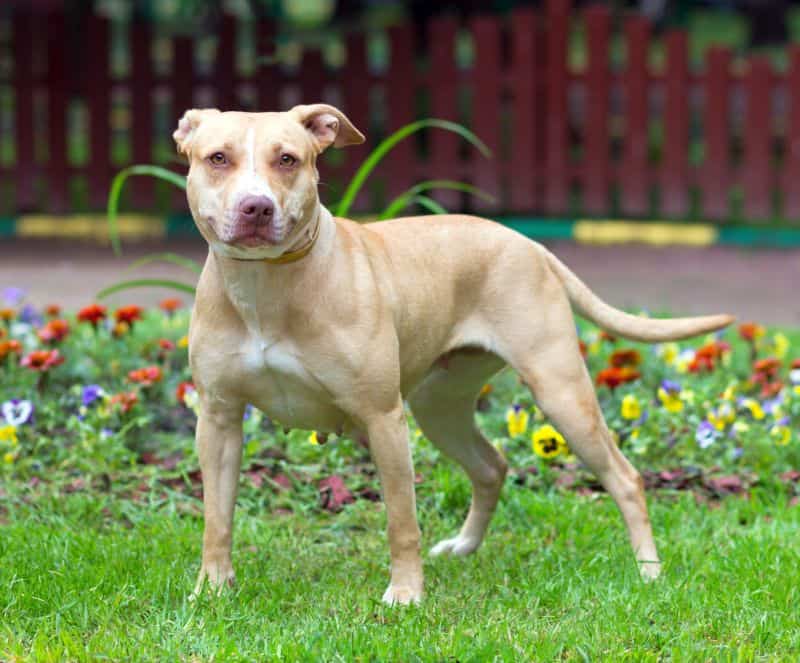
About: The breed behind the “pit bull” name is the American pit bull terrier or APBT. This medium-sized dog is well-known for his loyalty and athleticism, making him a beloved companion. He also goes by the name pit, pittie, pibble, and more, by fans of the breed.
History: It’s a terrible truth, but the APBT’s early years were shadowed by dogfighting and bull-baiting, two common blood sports back in the 1800s.
These dogs were developed by breeding English bulldogs with terriers to combine the athletic prowess and tenacity of a terrier and the strength of a bulldog.
The dogs became quite familiar quickly, as their reputation as a fierce working dog made them ideal for life around the farm, where they excelled in hunting and weight-pulling. The pit bull even found himself on the big screen, filling the shoes as the first Petey in the Little Rascals.
Today, APBTs hold a wide range of jobs, including police work, competitive agility, and — perhaps the vocation they’re best suited for — professional couch warming and crumb-between-the-cushion-finding.
Description: The APBT has a solid build, standing between 17 and 21 inches at the withers. Weights vary between 35 and 60 pounds, though a well-bred specimen should not be so large that it impacts his gait.
The APBT should move smoothly, as he’s intended to be an all-around athlete that carries himself with confidence. His tail is long and never docked, per standards, though it can be thin and whip-like, so watch your legs if he’s excited!
His head is large but should be proportional to his body, with a broad top and wide muzzle free of wrinkles. He should, however, have expressive wrinkles on the forehead and can have eyes in any color other than blue (note that some APBTs may have blue eyes at birth, but they should darken over time). His ears are set high and should fold over, and his neck should be thick but not overly so.
APBTs have a short coat that is glossy in appearance. His hair can be rather stiff to the touch, and to meet the standard, it should never be curly, long, or sparse.
Colors: APBTs are commonly seen in blue, red, black and white, and brindle colorings. Per UKC standard, all colors and patterns are acceptable except for merle and albino (yes, there are merle pit bulls)! The labels “red nose pit bull” and “blue nose pit bull” are often associated with the breed, which are another way of saying a pooch with a liver nose or a pup with a black or gray nose, respectively.
Common Health Issues: With a lifespan of 12 to 14 years, APBTs are generally healthy dogs, though they have several health concerns to watch for, including:
- Hip dysplasia
- Congenital heart disease
- Luxating patella
- Allergies
- Skin issues
- Cataracts
Breed Registries:
- United Kennel Club (UKC)
APBTs are happiest with their families. They are loyal to a fault and will love their peeps unconditionally.
With that in mind, they are not a dog that can handle long periods of time alone in a yard or house unattended. They are prone to separation anxiety and will make their unhappiness known, sometimes by redecorating your house with the innards of your favorite throw pillows.
If you’re expecting a long shift, hiring a dog walker or popping in during your lunch break is a good idea, as is crate training.
The APBT is a smart breed, but he can be stubborn. Firm guidance is needed but always focus on positive, reward-based training since APBTs can be surprisingly sensitive.
Early socialization with people, dogs, and other pets is a must. This breed has a strong prey drive and should never be trusted off lead outside of a fenced area. They won’t hesitate to chase a wayward squirrel and can have selective hearing when they’re on the run.
The APBT’s short coat works well in warmer conditions, though cold weather can be a problem for pitties. When the temperature dips below the 40s, limit outdoor time to short potty breaks and invest in a decent coat for walks or look into indoor exercise options.
They shed a good amount and can be prone to ear infections, so monitor them for odors or signs of redness.
With their history as a working dog, it’s no surprise that APBTs require a fair amount of exercise. A long, daily walk or vigorous romp in the yard can fulfill this need. That said, APBTs are affectionately referred to as “house hippos” by their owners, as they tend to wallow around the house and nap when they’re not running around.
2. American Staffordshire Bull Terrier
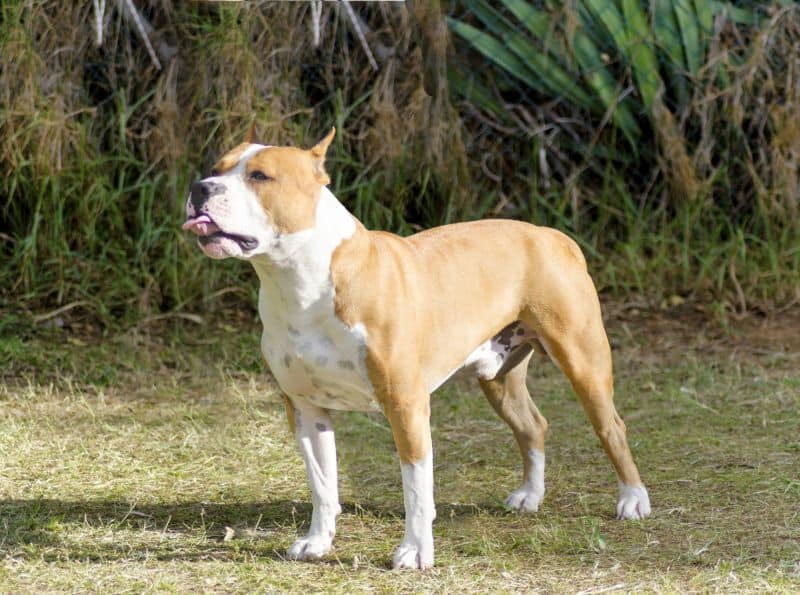
About: The American Staffordshire bull terrier or AmStaff is an early cousin of the ABPT but has distinct differences in size and appearance. He has a larger, heavier look, though he shares the APBT’s legendary loyalty.
History: AmStaffs were bred in the United States in the late 1800s, using Staffordshire terriers imported from England. By breeding this foundation stock with other terriers, a larger dog was achieved, forming the American Staffordshire bull terrier.
Like the APBT, the AmStaff was originally used in bull baiting and dogfighting but quickly transitioned into working roles around the farm, military, and even on movie sets. Remember Petey from the Little Rascals we talked about above? The second canine actor who played him was an AmStaff!
Description: Amstaffs are between 17 and 19 inches at the shoulder. Their height and weight are proportionate, and they generally weigh between 40 and 75 pounds. His build should be athletic, muscular, and stocky, and he should never have a leggy look.
The AmStaff’s head is broad with a full muzzle and wide-set, dark eyes. His ears sit high and may rise or rest half-risen but, per the standard, should never hang. His neck is strong with no loose skin, tapering to powerful shoulders, a short back, and a low-hanging, thin tail.
The AmStaff’s coat is short and glossy with a stiff, pricked texture. Unlike APBTs, AmStaffs aren’t labeled with the “red nose” and “blue nose” titles, as all AmStaffs have black noses, per the standard.
Colors: AmStaffs are acceptable in a rainbow of colors and patterns according to AKC standards, though full-body white, liver, or black and tan aren’t favored.
Common Health Issues: The AmStaff is a relatively healthy breed whose lifespan falls between 12 and 14 years, typically. He is susceptible to a few health concerns, however, such as:
- Congenital heart disease
- Hip dysplasia
- Elbow dysplasia
- Luxating patella
- Spondylosis
- Thyroid disease
- Cerebellar ataxia
- Skin sensitivities and allergies
Breed Registries:
- American Kennel Club (AKC)
The AmStaff is a confident breed that has well-documented courage, but at home, he can be a goofball.
He adores his family and is eager to please and play, requiring a good amount of daily attention. He isn’t a dog who can handle being ignored or left outside, so make sure you’re ready to commit to a loveable, attention-hungry cutie.
He needs firm, consistent training from an early age with plenty of high-value rewards on hand. This includes socialization with dogs, people, and other pets, along with regular obedience work. He loves nothing more than making his humans happy, but he is sensitive and should never be corrected harshly if he steps out of line. He has a healthy prey drive, too, so keep your AmStaff on a leash at all times when he’s outside of fenced areas.
AmStaffs don’t require a great deal of grooming with their short coats, but you should wash him as needed and monitor his ears and toes for signs of sensitivity. He doesn’t shed a ton, but he may drool.
Your AmStaff is a working dog at heart, and while he isn’t opposed to lounging around and catching up on Netflix with you, he should be walked daily and have regular play sessions to burn off his energy.
Not only will ongoing exercise help him feel his best, but it can also help maintain his weight (these pooches can pack on the pounds if you’re not careful).
3. Staffordshire Bull Terrier
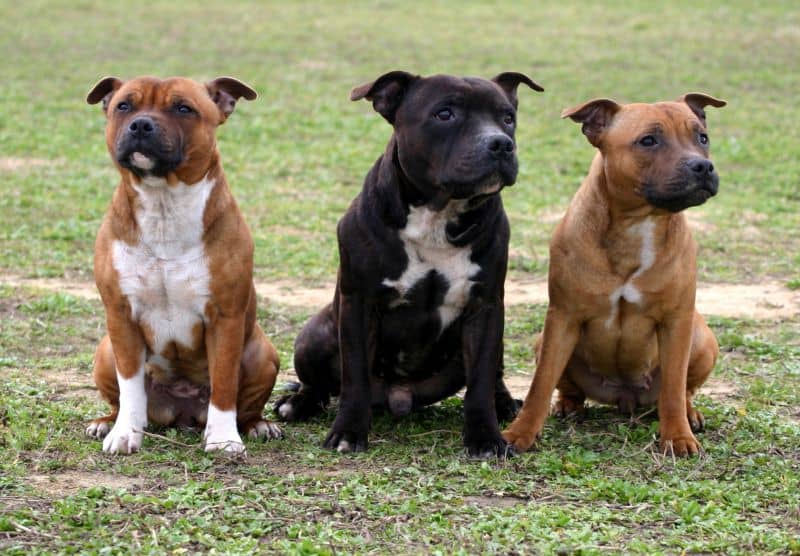
About: The Staffordshire bull terrier or Staffy is an older breed than the previous two and led to their development (it should also be noted that the Staffy is the only one of the three recognized by both the AKC and UKC).
A compact pupper with surprising strength, the Staffy is beloved for his “smiling” appearance and goofy nature.
History: Unsurprisingly, the Staffy’s history is quite similar to that of APBTs and AmStaffs. Tracing their original roots to the bulldog, Staffies were developed for blood sports.
However, while the Staffy’s roots are horrific, he went on to become a beloved companion around the world. Not only is he a good house dog, but since he’s a terrier at heart, he earned his keep by controlling unwanted pests like rats.
Description: Staffies stand 14 to 16 inches at the shoulder. Weight varies from 24 to 38 pounds. He should be muscular but still agile and never so bulky that he looks cartoonish or struggles to move smoothly. He’s a solid dog whose thick neck and broad shoulders suit his overall shape.
The Staffy head is short and broad with defined cheeks, giving him the “smile” we mentioned above. His nose is always black, and his eyes should be dark. His ears stand but fold at the ends, adding to his overall alert, concerned expression.
Staffy coats are short and smooth, and they should always appear shiny.
Colors: Staffies come in an array of colors and patterns, including brindle, fawn, black, and blue. The only forbidden patterns per the standard are liver and the black-and-tan combination.
Common Health Issues: Staffies are generally healthy and live between 12 and 14 years. They do have some health concerns in their history, including:
- L-2-Hydroxyglutaric Aciduria
- Elbow dysplasia
- Hip dysplasia
- Cataracts
- Luxating patella
- Skin allergies
Breed Registries:
- American Kennel Club
- United Kennel Club
A Staffy suits family life, as the only thing bigger than his smile is his heart. He loves being with his two-legged buddies and does best when he’s a central part of the family unit. He should never be left alone to exist in a yard or kennel, as he’s too sensitive.
Socialization with strangers, dogs, and other animals is necessary to avoid aggression.
The Staffy is one of the more difficult breeds on our list to train. He is intelligent and often thinks he knows what’s best, so he is not a dog for beginners. Positive training is essential in getting control of this independent streak early.
You should never trust him off-leash in an open area, as his prey drive compels him to chase whatever he sees, whether it’s a bunny or a drifting bag.
Your Staffy will be a regular shedder that leaves his short, spiky hair behind on furniture. Brushing as needed can cut down on these deposits.
Staffies require daily exercise to stay content. A long, meandering walk or hike with lots of sights and smells can satisfy both his physical and mental stimulation needs. He also thrives with high-intensity exercises, such as jogging.
His muzzle is shorter, however, so keep in mind that he can overheat in warmer weather.
4. American Bulldog
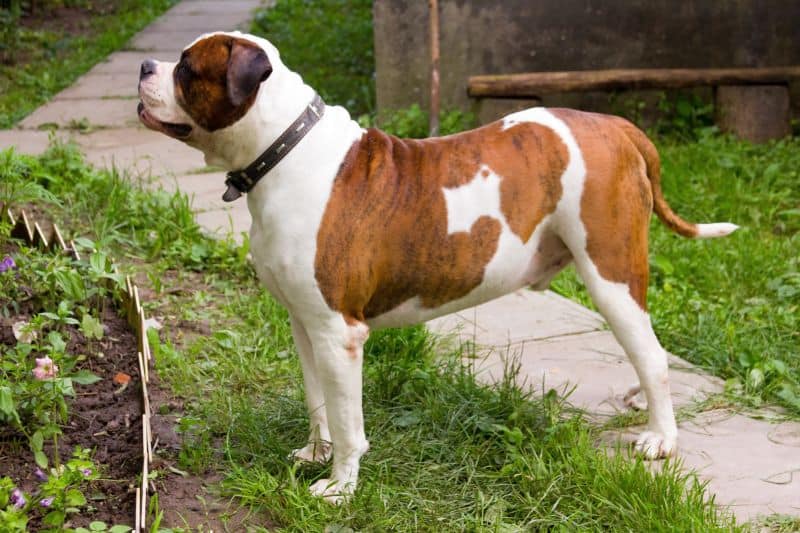
About: The American bulldog is a strong working breed built to be a farmer’s right-hand doggo. He shares a pittie’s solid form and large, blocky head, but he’s much bigger.
History: The American bulldog was bred in the United States in the 1700s, using a mixture of bulldog imports from England. He was designed to fulfill many roles around a property, including guardian, catch dog, and herder. His popularity fell over the years, but he made a recent resurgence.
Description: American bulldogs stand between 20 and 28 inches at the withers. Weights vary from 60 to 120(!) pounds depending on sex. His muscled body should still allow for a smooth gait. He’s heavily boned and built but shouldn’t look overly bulky or round like the more familiar (English) bulldog.
His head is large and wide with a broad muzzle and noticeable jowls. His expression is always alert, and his ears are set high, with dark brown eyes preferred (though not required). American bulldogs typically have black noses, though red and brown schnozzes are also allowed.
The American bulldog’s coat is less than an inch long and stiff to the touch. It should lay flat and never exhibit a wave or curl.
Colors: American bulldogs come in many colors and patterns, including white, fawn, and brindle. The only disqualifications are solid black, solid blue, tricolor, merle, and a solid black mask.
Common Health Issues: The American bulldog lives between 10 and 15 years which is longer than most bulldogs, but he has several notable health concerns, such as:
- Hip dysplasia
- Degenerative myelopathy
- Deafness
- Hyperuricosuria
- Ichthyosis
- Neuronal ceroid lipofuscinosis (NCL)
- Cherry eye
- Entropion
Breed Registries:
- American Kennel Club
- United Kennel Club
American bulldogs are great family dogs that are highly protective of their home and humans. He’s famous for his sloppy kisses, but he won’t offer those to strangers. He is naturally standoffish to new people or dogs, so make sure he’s well socialized in puppyhood and beyond to avoid issues.
For a bulldog, he’s on the easier side to train. He responds well to rewards and learns quickly. He can be bull-headed if under-exercised or bored, so make sure you don’t use too much repetition, or he’ll quickly tune you out. Combining learning with fun and play breaks is ideal.
He’s a regular shedder, though it isn’t an overwhelming amount (and the right food may help keep his shedding to an even more manageable level). His short coat is easy to care for, only needing brushing to remove loose hair and bathing when dirty.
American bulldogs need daily exercise. He’s a perfect breed pick for a running partner, though a long hike or walk along with games of tug-of-war or fetch work well, too.
He isn’t a dog that can burn off his steam in the backyard alone. He will become frustrated and destructive, making a dog walker a must if you’re short on time.
Other Breeds Sometimes Confused with Pit Bulls
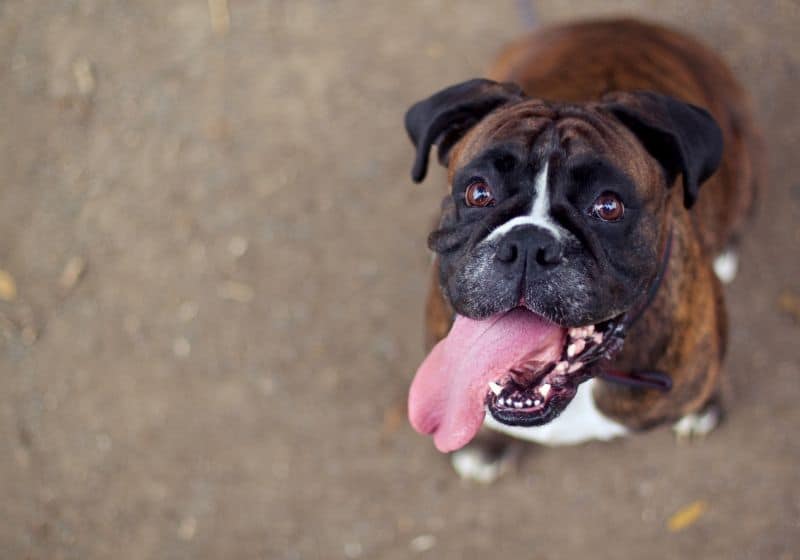
The four breeds discussed previously are all somewhat closely related and share relatively similar histories, which helps explain why they’re often lumped into the same “pit bull” category.
But there are also a few breeds who aren’t particularly closely related to pitties that people often confuse with pit bulls — they’re often lumped together as a group known as “bully breeds.”
But it is important to note that this only occurs because these breeds have blocky heads, which make them vaguely similar-looking to pitties.
We’ll discuss some of the most notable examples below.
Dogo Argentino
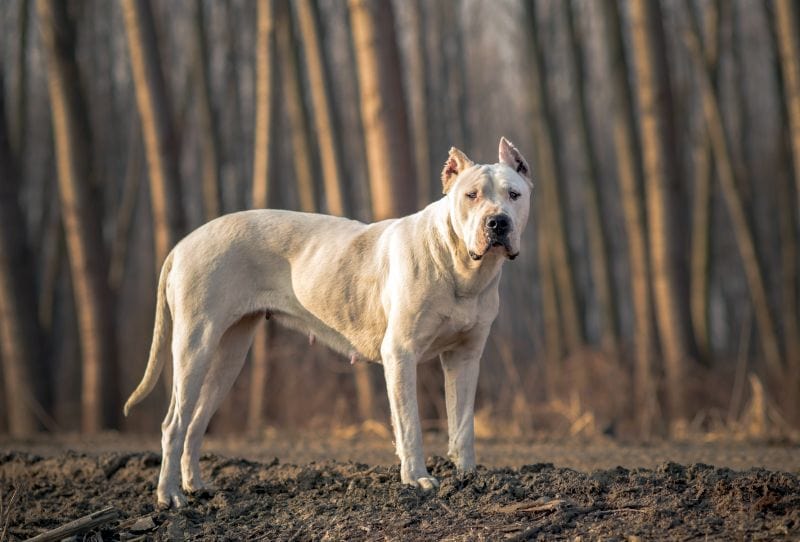
About: A mighty hunting breed from Argentina, the Dogo Argentino is regularly mistaken for being a white pit bull. These mastiffs are much larger, however.
History: Originally developed for blood sports, this breed proved himself to be a formidable hunting companion in the early 20th century. He regularly joined big game hunts for a multitude of wildlife, including pumas and wild boar. Over time, they found themselves working in guardian and companion roles, too.
Description: The Dogo is a large dog weighing between 80 and 100 pounds. He stands between 24 and 27 inches at the withers. While he’s a powerful breed, he should still move with grace and agility. His shoulders are shapely and should be well-muscled but not disproportionately so.
His head is impressive but shouldn’t appear bulky or oversized. It’s wide without wrinkles and appears smooth. His eyes are always dark, and his expression should remain alert with his ears set high. He has a blocky muzzle and a thick neck, which often leads to his confusion with other bully breeds.
Dogos have a short, straight coat that is smooth and glossy. It lays flat and is never long or wavy.
Colors: The Dogo is entirely white, though an occasional black spot is acceptable.
Common Health Issues: Dogos live an average of 10 to 12 years and may experience a few health problems, including:
- Hip dysplasia
- Thyroid issues
- Eyelid malformation
- Heart disease
- Skin allergies and sensitivities
- Deafness
Breed Registries:
- American Kennel Club
- United Kennel Club
The Dogo is fiercely protective of his family and home. He adapts well to family life and children, though he needs time to warm up to unfamiliar faces. In addition to socializing with people, he needs repeated positive exposures to other dogs and animals to prevent aggression.
Dogos are not a breed for newbies. They’re assertive and will challenge you. Because of this and their size, training must start immediately and be ongoing. He needs to learn boundaries before he’s too large and unmanageable. Keep training positive and consistent.
His short coat doesn’t require much grooming. He only needs a bath when absolutely necessary, though his coloring can leave him vulnerable to sunburn, so take preventative measures when necessary, such as using t-shirts to shield his skin. You may also need to discourage him from lazing in the sun during high UV index days.
Dogos have some of the highest exercise requirements of all bully breeds. He’s a strong dog who has seemingly unlimited energy at times. Daily exercise is a must and is best achieved through jogging, hiking, long walks, and mental stimulation such as puzzles or sports, like obedience and agility. He is not a dog for lazy owners.
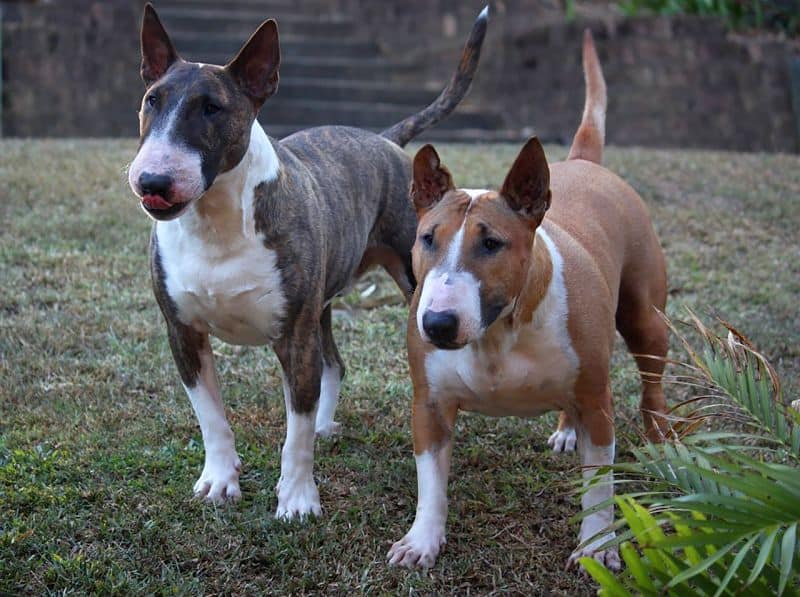
Bull Terrier
About: The bull terrier is a solid dog made to work. Recognizable by his distinct look, this precocious potato head is occasionally confused with other bully breeds because of his name, expression, and coloring.
History: A relative of the bulldog and Staffordshire bull terrier, the bull terrier is the result of mixing bulldogs with various terriers to create a more ferocious dog for bull baiting and other blood sports. Once the sports were finally outlawed, bull terriers found their place in the home and assumed the role of companion.
Today, these adorable pups with odd-looking faces continue to keep us company, but they also make excellent vermin catchers.
Description: Bull terriers come in two size sets: standard and miniature. The standard bull terrier stands at 20 to 24 inches tall and weighs 45 to 80 pounds. The miniature stands 10 to 14 inches high and weighs 24 to 33 pounds. The bull terrier body is muscled but never bulky or overly rounded like that of a bulldog.
The bull terrier has a unique head that is long and oval, often called “egg-shaped” by breeders. His eyes are dark and sunken in nature. His nose is always black, and his ears sit high and pricked upward.
Bull terriers have a short coat that is shiny and coarse in texture. Unlike other bully breeds, his skin isn’t wrinkled and sits tight against him body-wide.
Colors: Bull terriers are lumped into two groups by the AKC: white and colored. White dogs may have coloring on the head but should be entirely white elsewhere. Colored variants are black, brindle, red, fawn, and tricolor.
Common Health Issues: Bull terriers have a life expectancy of 10 to 14 years and may exhibit some health problems, like:
- Luxating patella
- Heart problems
- Kidney disease
- Skin sensitivities
- Propensity to gain weight
- Deafness
Additionally, some authorities suspect that bull terriers may be one of the few breeds to exhibit autistic-like behaviors.
Breed Registries:
- American Kennel Club
- United Kennel Club
Bull terriers are friendly pups that have never met a stranger.
He’s a solid choice for a family dog and thrives when he’s with his humans. He doesn’t always extend this same welcoming to other dogs or animals, however, so early socialization is a must.
Expect a lot of laughs with your bull terrier because he’s renowned in the dog world for his goofiness.
While a fun-loving goofball, he’s also a terrier, and he’s one of the trickier bully breeds to train. He has a mind of his own and will put it to use as he sees fit, which might mean cutting your training time short.
Consistent, positive training should be started early, but expect your bull terrier to have his moments. It’s just part of his personality. He is not a good choice for a first-time dog owner.
The bull terrier’s short coat sheds seasonally. He doesn’t require a ton of grooming, with the occasional brushing and bath maintaining his good looks.
The bull terrier is an energetic pup that needs daily mental and physical exercise.
His requirements aren’t high though, so a walk and backyard fetch are perfectly acceptable. He also enjoys sports, making him a good fit for agility, disc dog, and flyball.
Check out some adorable bull terrier mixes!
Boxer
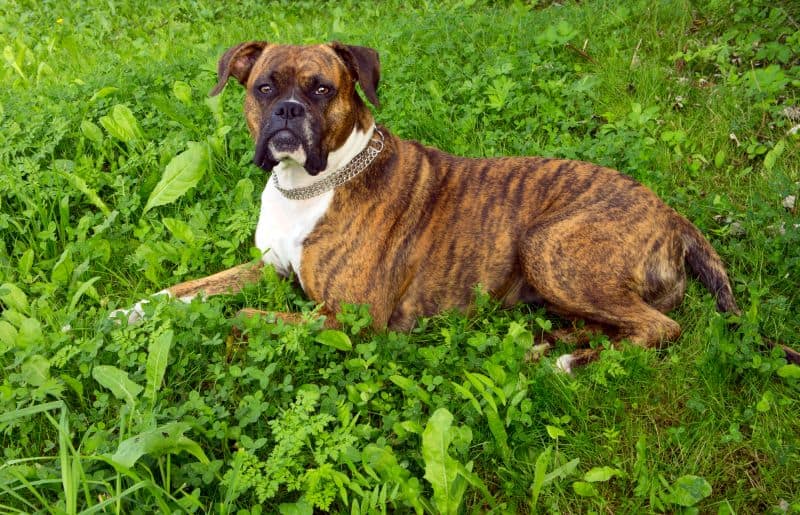
About: The boxer is a medium-sized breed that is well known for his happy-go-lucky nature. His square muzzle and muscular body often cause him to be confused with pit bulls and other bully breeds.
History: Boxers are descendants of an extinct German hunting breed called the Bullenbeisser. The boxer was bred to be used in dog shows, though they’ve proven themselves to be talented herders, police pups, and watchdogs too.
Description: Boxers measure between 21.5 and 25 inches at the withers. They range in weight from 55 to 70 pounds, and their weight should be proportionate to their height without appearing overly bulky. He should always move smoothly, though anyone with a boxer knows they sometimes let their clownish nature shine with a bit of bounce.
Boxers have a large head, but it’s never oversized compared to their body. Wrinkles appear near the ears and muzzle, and he should always appear alert with dark eyes. He has a short, blocky muzzle with a slightly upturned nose, giving him his signature pout.
The boxer’s coat is very short and shiny in appearance. It should be smooth and not overly coarse to the touch.
Colors: Fawn and brindle are the only AKC acceptable colors.
Common Health Issues: Boxers live between 10 to 12 years and may experience a few health concerns, like:
- Aortic stenosis
- Cardiomyopathy
- Hip dysplasia
- Entropion
- Bloat
- Degenerative myelopathy
- Thyroid disease
- Cancer
Breed Registries:
- American Kennel Club
- United Kennel Club
The boxer is an all-around excellent family dog. He’s goofy with a playful spirit that meshes well with children, making him a wonderful dog buddy for kiddos. He’s the perfect adventure partner and thrives as a jogging or hiking companion.
He’s happiest when he’s with his family and shouldn’t be left alone while everyone else goes out and has fun. He’d rather be there with you and will make his displeasure known with his propensity to develop separation anxiety.
Boxers are one of the easiest bully breeds to train. He’s easily persuaded with food or positive reinforcement and is intelligent enough to enjoy learning new things regularly. He’s also a friendly guy, though as with any breed, you should socialize him with strangers, new dogs, and small animals from an early age.
The boxer’s grooming needs are minimal. He only needs brushing and bathing when absolutely necessary. Occasional shedding hair needs removal to keep his coat shiny, but other than that and regular nail trims, he’s a breeze.
The boxer is a high-energy breed that requires daily exercise. A long walk and backyard play can meet these needs, but he’s also an excellent fit for canine sports, like agility and herding. Boxers are impressive jumpers, so make sure your yard features a fence that’s at least six feet tall and never leave him in an enclosed area unattended.
English Bulldog
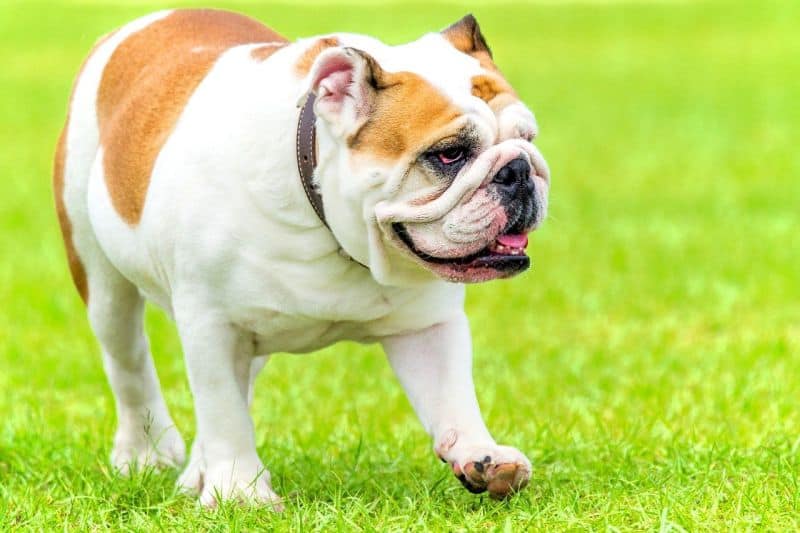
About: A low-riding meatball with a squished snout, the English bulldog is a favorite in the non-sporting group. We know it’s silly, but English bulldogs are sometimes confused with other bully breeds despite being quite different in appearance.
History: Dating back to the 1800s, bulldogs were once much more athletic (and healthy) than they are today. Originally used in bull-baiting, they were powerful dogs with strong jaws, stamina, and a fighting spirit. Over time, they gravitated into the home, and breeding resulted in the shorter muzzle and heavyset shape seen today.
Description: Male bulldogs weigh up to 50 pounds while females top out around 40. Relatively short, they reach 14 to 15 inches at the shoulder. He moves with a signature rolling gait, though always heavily and with confidence. He has wide shoulders and a rounded body that is compact in length, giving him a boulder-like look.
In comparison to their bodies, bulldogs have a large head with low set, dark eyes. All other colors, including blue, are disqualifications of the breed standard. His short, broad muzzle is upturned, leading to his famous pout. His tail is short and stumpy and may be straight or curled in appearance.
Bulldogs have a smooth coat that rests flat against the body. He’s a wrinkly guy from head to toe with thick, loose skin prone to folding, especially around the neck and chest.
Colors: Red, white, fallow, and fawn are acceptable, along with any combination of them. Approved patterns are piebald, brindle, ticking, and masks. Differing colors or patterns, including merle, are prohibited per the AKC standard.
Common Health Issues: Bulldogs aren’t the healthiest breed, with a life expectancy between 8 and 10 years. They are born almost exclusively by cesarean section and are sensitive to anesthesia. Bulldogs are prone to a number of serious health concerns, including:
- Hip dysplasia (the highest incidence in all breeds!)
- Luxating patella
- Cherry eye
- Entropion
- Eczema
- Brachycephalic Airway Obstructive Syndrome
- Heart disease
- Kidney disease
- Megaesophagus
- Obesity
Breed Registries:
- American Kennel Club
- United Kennel Club
The bulldog makes an excellent family dog. He’s sturdy enough for play but isn’t so bouncy that he’ll send toddlers flying left and right if he’s lived with them from an early age. He gets along with other doggos and pets just fine, but you should encourage him to share toys and food to avoid possessiveness.
Bulldogs are adorable, but they’re also stubborn. He’s a sweet guy that’s easily motivated by positive reinforcement, however, so with early training, he’ll be on track in no time. Sometimes he might do things his own way, but if you keep things upbeat and positive, he’ll waddle back into line.
Your bulldog’s short coat is easy to care for with baths and brushing as needed, but his wrinkles and rolls can get a little yucky. Check and clean his face folds as needed and make sure he’s blotted dry after coming in from the rain. Otherwise, he can suffer from skin irritation or yeast infections.
The English bulldog is a low-energy dog breed, serving as the ultimate couch potato. He’s happy to plop next to you and binge-watch television with a bowl of grub, making him an excellent breed candidate for apartment life.
You need to encourage your bulldog to exercise daily with at least a walk when conditions are suitable or indoor play if it’s too hot. If not, the bulldog is prone to packing on pounds.
Olde English Bulldogge
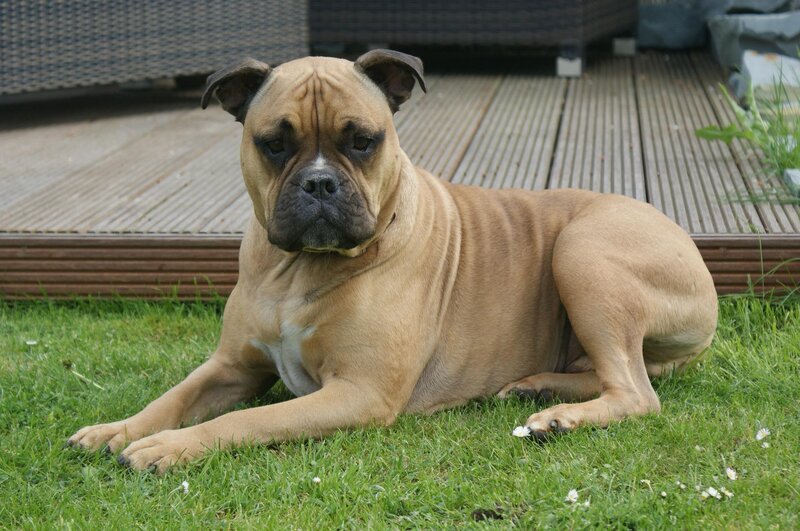
About: The Olde English Bulldogge is a muscular, medium-sized dog with an expressive face. He strongly resembles an English bulldog with a taller, athletic frame, which commonly gets him confused with pitties.
History: The Olde English Bulldogge (OEB) was developed in the 1970s when a group of bulldog fanciers banded together to build back the breed’s original looks, a departure from the English bulldog seen today whose short snout and rotund build greatly impact his health and stamina. Today, the OEB closely matches the appearance of bulldogs from the 1800s.
Description: OEBs are between 16 and 20 inches at the withers. They weigh anywhere from 50 to 80 pounds, making them larger than today’s English bulldog. He moves with a smooth, confident gait. His neck is defined, leading to broad, powerful shoulders and a well-built body that is proportionate. Some have docked tails, but a full, unaltered tail is preferred.
The OEB head should be large but not exaggerated with a squared muzzle. Some wrinkling and hanging jowls are essential, though neither should be excessive. His nose is always black and wide, with his snout length long enough to not impede breathing. OEBs always have brown eyes. All other colors are a fault, per the standard.
The OEB has a short coat that is glossy. His hair is medium in thickness and should never appear long or fringed.
Colors: OEBs come in many shades and patterns, like brindle, white, black, and pied. Disqualifying colors are blue, black and tan, and albinism.
Common Health Issues: OEBs have a life expectancy of 9 to 12 years with health concerns including:
- Hip dysplasia
- Entropion
- Skin issues
- Bloat
Breed Registries:
- United Kennel Club
The OEB makes an excellent family dog. He’s a sweetheart with his people, though he can be aloof with strangers. He’s agreeable with other animals, including dogs and cats.
As a brachycephalic (short-faced) breed, your OEB should live indoors and never be left for extended periods outside in extreme cold or heat.
As with most bully breeds, your OEB can be stubborn. Early training that is reward-based is best for him. He may be an intimidating tough guy in the looks department, but he’s a big softie on the inside, so never discipline your OEB harshly.
The OEB’s short coat is low maintenance. He sheds a moderate amount, but brushing and bathing as needed will keep his handsomeness intact. Special care should be taken with his facial folds, however, to avoid skin irritation. Clean and/or dry them when necessary.
Your OEB needs regular exercise, though his requirements aren’t as high as other bully breeds. A daily walk will suffice, along with some mental stimulation in the form of backyard play or interactive toys.
Patterdale Terrier
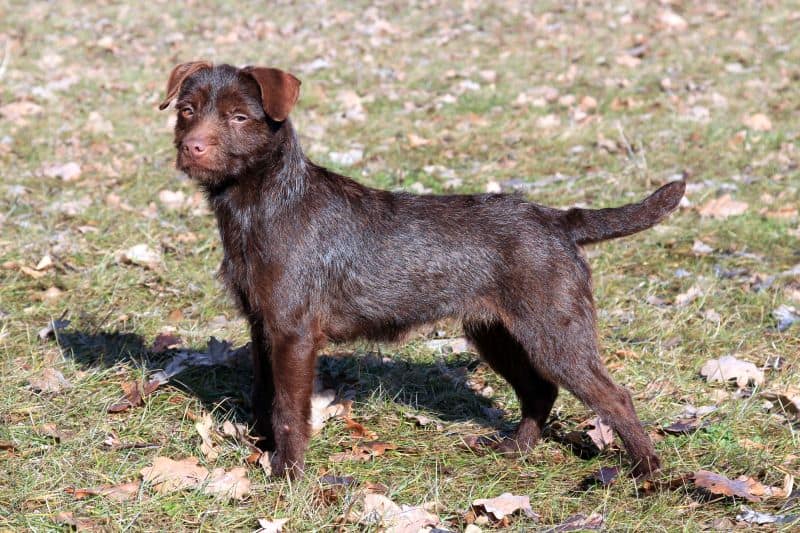
About: The Patterdale terrier is a working breed with more drive than the Energizer Bunny. While he’s the smallest pupper on this list, he might just be the most tenacious. Despite his smaller size, his wide-set eyes and flipped ears are frequently confused with pit bulls and pit bull mixes.
History: Also known as the Black Fell terrier, Patterdales come from northern England. They were bred for killing animals that preyed on sheep, including foxes and badgers. He more than makes up for his lack of size in courage and athleticism, traits that make him a treasured sport dog today.
Description: The Patterdale is a bit of a tiny tornado at a mere 12 inches in height and 13 pounds in weight. Don’t let this fool you, however, as he uses every bit of himself in everything he does. From his neck to his tail, he is well-muscled and built to go toe to toe with whatever he turns up in a burrow.
Patterdales have a large head with a prominent forehead and strong, pointed muzzle. His eyes are positioned far apart and generally dark, though the only discouraged eye color is blue. His ears stand but fold, giving them a floppy, puppylike look.
The Patterdale comes in three coat varieties: smooth, broken, and rough. All are coarse to the touch and waterproof, though the rough coat is long all over, while the broken type features a few longer patches at the muzzle.
Colors: All colors are seen other than white, though a solid pattern is preferred rather than a spotted look.
Common Health Issues: Patterdales live for up to 13 years and are relatively healthy with only a few health concerns, including:
- Disc disease
- Glaucoma
- Primary Lens Luxation (PLL)
- Luxating patella
- Liver shunt
Breed Registries:
- United Kennel Club
The Patterdale loves his owner but isn’t overly affectionate. He should be included in family activities whenever possible, especially to keep this expert digger and troublemaker from making his own fun as he sees fit. He can be a bit much for families with children, but with training and conditioning, he can be an agreeable family dog as long as he’s part of the action.
Your Patterdale is a terrier to the bone, which means he will push you.
Frequently.
He is not a dog for a beginner and will walk all over those who give him the opportunity to do so. He needs structure and obedience training from an early age, along with frequent, ongoing socialization. He’s scrappy and not the best pick for life with other dogs. Due to his high prey drive, he should never be trusted with small animals.
Patterdales need little grooming, regardless of coat type. He sheds little and doesn’t need special stripping like some terriers. He was designed to be low maintenance, making him an excellent hunter’s companion or farmhand.
The Patterdale isn’t a house dog. He needs vigorous daily exercise and a job to do. Jogging and hiking are excellent options for him, as are canine sports like lure coursing, agility, ratting, and more. Most will also enjoy chasing a flirt pole lure in your backyard.
Remember: A tired Patterdale is a happy (and well-behaved) Patterdale.
Cane Corso
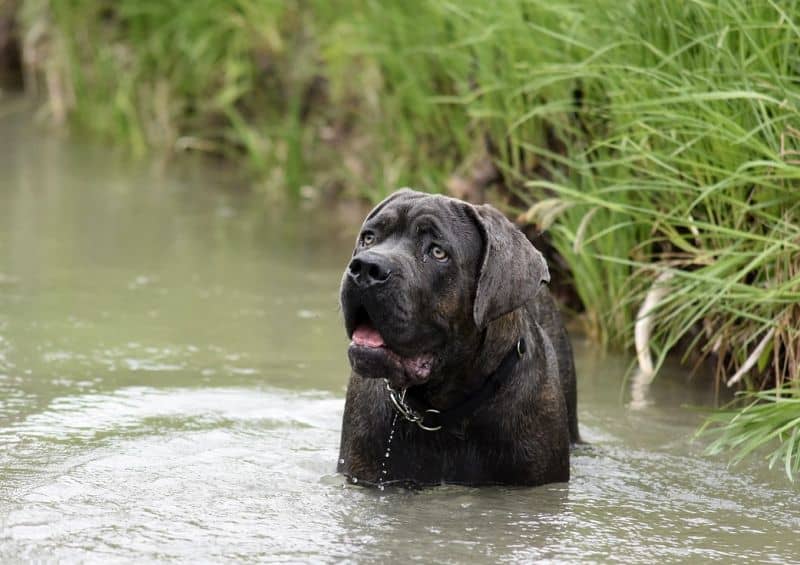
About: The cane corso is a large Italian mastiff that’s prized around the world as a companion and protector. His wide head and bulky muzzle are sometimes confused with other bully breeds, including pit bulls, though he’s far different in appearance and origin.
History: Dating back to ancient Roman times, the cane corso is a working dog who was bred to assist in boar hunting and guarding property. His imposing size and strength suited both jobs, and he’s still used for both today. The breed almost vanished as his popularity waned, though a group of dedicated breeders in the mid to late twentieth century helped them rebound.
Check it out: 11 Best Dog Foods for Cani Corsi!
Description: The corso is a powerfully built mastiff that stands from 23.5 to 27.5 inches at the withers, depending on sex, and typically weighs between 90 and 120 pounds. His weight should always be proportionate to his height, never affecting his agility or gait. He has a thick neck and broad chest, tapering to a well-muscled frame.
A corso’s head is broad with wrinkles giving him a bit of character between his eyes. The eyes themselves are generally dark, with lighter shades of brown acceptable in gray dogs. Blue and yellow eyes are faults, per AKC standards. His muzzle is wide with noticeable jowls.
His coat should be short and glossy. Despite his coat’s lack of length, he has an undercoat that thickens in cold conditions. To the touch, his hair is stiff.
Colors: Cani corsi (yeah, this breed has a weird plural form) come in many colors, including black, blue, fawn, and red. The only AKC color disqualification is tan patterning.
Common Health Issues: Cani corsi live between 10 to 12 years and can experience several health problems, including:
- Hip dysplasia
- Idiopathic epilepsy
- Bloat
- Cherry eye
- Entropion
Breed Registries:
- American Kennel Club
- United Kennel Club
Cani corsi may be intimidating in appearance, but they’re gentle giants with their families and quite affectionate. He thrives in the house and isn’t a candidate for outdoor living. He requires ongoing contact with people, and he needs thorough socialization with strangers, dogs, and small animals.
Early training is essential in shaping a well-rounded, obedient dog. Your corso will grow quickly, and getting a handle on his puppy impulses as soon as possible is a must to avoid a bully of a dog who does his own thing. Use firm but positive methods, and you’ll be rewarded with a top-notch doggo who strives to obey commands.
The corso’s short-haired coat sheds, but he doesn’t need much grooming beyond a bath here and there and brushing to remove loose hair. Drooling is a definite concern, especially when he’s drinking, so keep his water bowl on an appropriate surface and a towel handy to wipe away excess drippage.
Your cane corso needs more exercise than other mastiffs. He’s a hard worker and needs daily physical and mental challenges. Long walks and hikes are right up his alley, and if you can get him in a sport like schutzhund or tracking, it’s an excellent way to put his natural abilities to work.
Presa Canario
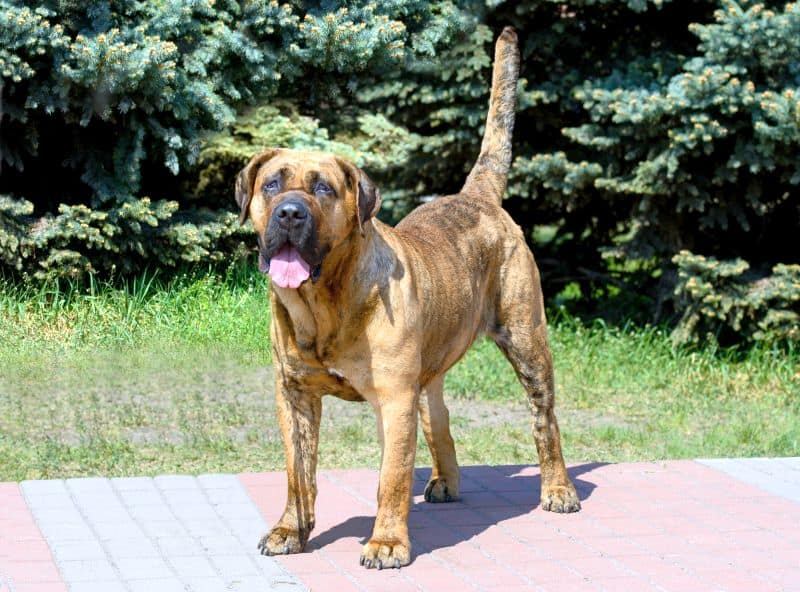
About: Officially known as the Perro de Presa Canario, the Presa is a powerful Spanish mastiff. He is often lumped in with pit bulls, though he’s a remarkably different breed both in appearance and background.
History: Originally from Spain’s Canary Islands, the Presa is a large working breed who got his start with cattle, primarily protecting them from wild dogs and boars. He was also tasked with catching boar or runaway cattle. In addition, they were unfortunately used in dogfighting for a short time, but this wasn’t their original purpose. Today, the Presa remains a prized farm dog, and he’s a favorite catch dog amongst wild hog hunters.
Description: The Presa weighs between 80 and 110 pounds and stands 22 to 26 inches tall. His frame is muscled, especially around the shoulders, tapering back to a defined waist and straight tail with a thick base. He carries himself with the utmost confidence and moves with a long gait.
His head is large with an expressive face and a distinct black mask. The muzzle should be wide with noticeable jowls. Presa eyes range from a medium brown to almost black and should never be light.
The Presa’s coat is short and coarse to the touch. He lacks an undercoat, though, in true mastiff fashion, his skin can be loose, especially around his neck.
Colors: Presas comes in many shades, including fawn and silver, and all variations of brindle patterning.
Common Health Issues: Presas have a life expectancy of 9 to 11 years. They face a few health concerns, including:
- Hip dysplasia
- Luxating patella
- Cardiomyopathy
Breed Registries:
- American Kennel Club
- United Kennel Club
The Presa is a guardian at heart and loves his family fiercely. He isn’t the same with strangers, however, who he’ll often regard with suspicion. However, through early socialization, he can learn to tolerate their presence.
Since Presas are such large, powerful dogs, training should begin as soon as he comes home, including basic obedience, manners, and introductions to new people and animals to curb his tendency to be standoffish. Sometimes he can be a bit stubborn, but with treats and patience, he’ll stay on task.
Grooming a Presa’s short coat is easy, and he only requires bathing when necessary. He’s an average shedder, and a quick brush is all he needs to remove loose hair. His ears should be monitored for buildup and cleaned accordingly.
While the Presa is a working breed, he doesn’t require a great deal of exercise. He’s laid back indoors, and a daily stroll and backyard play can satisfy his needs just fine.
Things to Consider Before Getting a Bully Breed
As a proud mama to two bully mixes in my pack, I know why so many people are drawn to bully breeds. But as with any dog breed, there are things you need to think about before bringing one home, along with obstacles you may not expect, such as:
- Not ideal for first-time owners: Bully breeds can be incredibly stubborn, or better yet, “bull-headed.” Especially those adorable, wrinkly bulldogs. They are generally eager to please and food-motivated but masterful at pushing boundaries and perfecting selective hearing. If you’re looking for your first dog, this group may not be the best option.
- Separation anxiety: Bully breeds are notoriously loyal and, dare I say it, overly attached to their humans. This can lead to a constant doggy shadow around the house, but it can also result in some gnarly damage (or noise) if your pup is left alone. This makes them less suitable for apartment life. In addition to crate training, you may need to get creative in keeping your bully breed out of trouble when you’re not around.
- Health problems: Some bully breeds, like APBTs and AmStaffs are prone to skin sensitivities and allergies. Others, like the English bulldog, face a mountain of health concerns that can be expensive to treat.
- Exercise needs: It varies by individual, but most bully breeds require daily exercise and mental stimulation. Some tools, like spring poles and flirt poles, can be used in the yard to tire your pooch out, or you can sign them up for a sport, like dock jumping or agility. Some also make great jogging companions. Meeting their needs can be tricky, but in the end, it results in a happier, healthier pooch.
- Prey drive: Bully breeds, particularly those with terrier ancestry, have high prey drives that can make walks a pain if your pooch isn’t taught to “leave it” at an early age. This also makes recall difficult.
- Gas: Bully breeds are full of farts. So much so that they should have a warning label. Owning one comes with an assortment of horrific smells and sounds, regardless of what you feed them. They’re just a gassy breed bunch. This isn’t a deal-breaker for everyone, but it can be hard to live with, especially if you’re writing with one under your desk…
- Socialization needs: Bully breeds can be inherently standoffish to strange dogs or animals, so early work is needed to ensure a well-adjusted pup. Puppy training classes are ideal once he’s had all his shots, though ongoing exposure to other dogs, people, and animals is a must. This helps with small animals, as the prey drive we mentioned above can be an issue with cats.
- Breed bans: Some countries, cities, and living communities have breed-specific legislation that bans the ownership of certain bully breeds, like APBTs (though some cities are thankfully overturning these bans!). This not only affects where you live but can extend into things you normally wouldn’t think about, like where you board your dog for vacation or doggy daycare, as not every kennel or dog resort accepts pit bull-type breeds. These restrictions can also apply to airlines.
- Negative stereotypes: An unfortunate part of life with a bully breed is judgment. Not everyone is a fan of them, and some are vocal about it, regardless of how well-trained, friendly, or handsome your dog is. This may mean nasty comments hurled your way during walks or terrible comments on your pupper pictures online. Having a bully breed requires you to be an ambassador for them. Thick skin doesn’t hurt, either.
- Insurance issues: Not every homeowner or renter’s insurance company will provide coverage if you own a bully breed. Others may cover you, but at a higher rate. This varies by insurance carrier, so you’ll need to check with yours first or shop around if you plan on bringing a bully breed home. Not all companies have these policies, however. State Farm, for instance, does not.
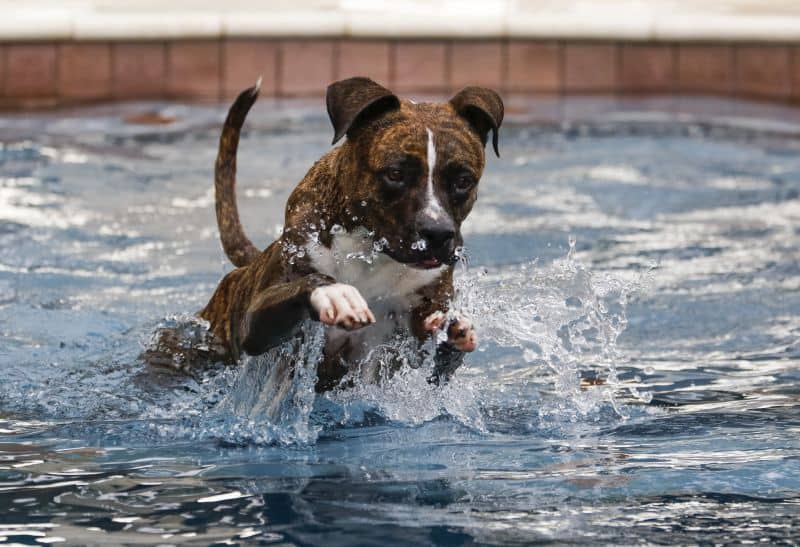
Pit Bull and Bully Breed FAQs
A lot of questions float around about pit bulls and bully breeds. As a whole, they’re misidentified and lumped into one group, so it’s not a surprise that a lot of misinformation is out there.
Let’s run through the most common questions together!
What are the types of bully breeds?
There are many breeds that fall under the bully breed umbrella. There are bulldogs, like the English, as well as terriers, including the Patterdale. You can even find mastiffs in the group, such as Presa Canarios.
How can I tell what breed my bully pup is?
As you can see from the breeds we discussed, some bully types are remarkably similar in appearance to one another. Identifying breeds at a glance is incredibly difficult and generally inaccurate. Not every brown, 50-pound pupper with a big, ole noggin is a pittie, though most shelters label them as such. Your best bet if you want to know your dog’s exact breed is a DNA test, like Embark.
What is the most dangerous breed of pit bull?
None. Any dog can bite. A dangerous dog is the result of poor training, care, and other factors. One breed isn’t more dangerous than another. All dogs should be treated with respect, socialized, and monitored to prevent bites.
What colors are pit bulls?
Pit bulls come in many shades and patterns. According to the UKC standard, all are acceptable except for merle and albinism. You may occasionally hear “red nose” and “blue nose” associated with the breed, which is another way of saying a dog with a liver nose or a pup with a darker nose, like gray or black.
What type of bully breed is best?
The best bully breed is the one that works with your lifestyle. Some people enjoy the laid-back nature of English bulldogs, while others love the sportiness of APBTs.
How big do pit bulls get?
The American pit bull terrier or APBT weighs between 35 and 60 pounds. Height ranges vary, with males standing between 18 and 21 inches at the withers and females from 17 to 20 inches. But some bully breeds — such as the American bulldog — may grow quite a bit larger and reach 120 pounds or so.
What other breeds look like pit bulls?
Over a dozen breeds resemble American pit bull terriers and are regularly confused with them. We discuss most of the common ones above.
Why do pit bulls turn on their owners?
They don’t… unless you count sneak tongue kisses on the couch. As far as dogs in general turning on owners, that can be the result of abuse, poorly-used aversive training techniques, or disease (such as rabies.)
Are pit bulls good with kids?
Yes, but as with all dogs, children should be taught to treat the animal with respect. All too often, children are bitten because children are left alone with dogs or permitted to be rough with them.
Doggos have boundaries, just like people, and as your pup ages, he may be in pain and unable to handle as much contact. As for your pittie, he should be socialized with all types of people, including kids, from an early age like any other dog.
Are pit bulls good with other dogs?
APBTs and other bully pups require early socialization. They are naturally aloof to strange dogs, but if continually socialized, they can happily live with other pooches.
Do pit bulls make good guard dogs?
Pitties can make good watchdogs, but most industry professionals find them too friendly for guard dog work.
Their image may be tough, but you can easily persuade a pit bull to turn a blind eye if you give him something tasty. Other breeds aren’t as easy-going.
How do pit bulls lock their jaws?
They don’t. Dog lock jaw is an old, long-disproven myth that makes absolutely no sense. How would they eat? They do, however, lock their eyes on cookies if offered.
***
Do you have a pit bull or another bully breed at home? What kind? Is he a professional couch potato or a high-octane athlete? Let us know in the comments!
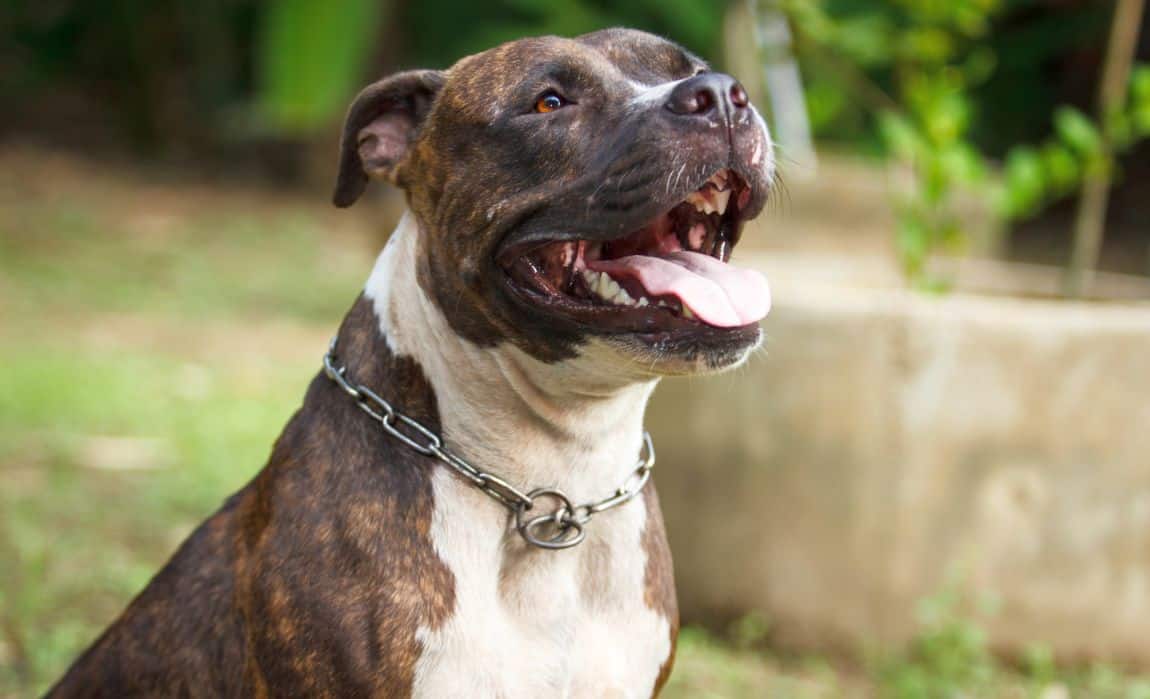

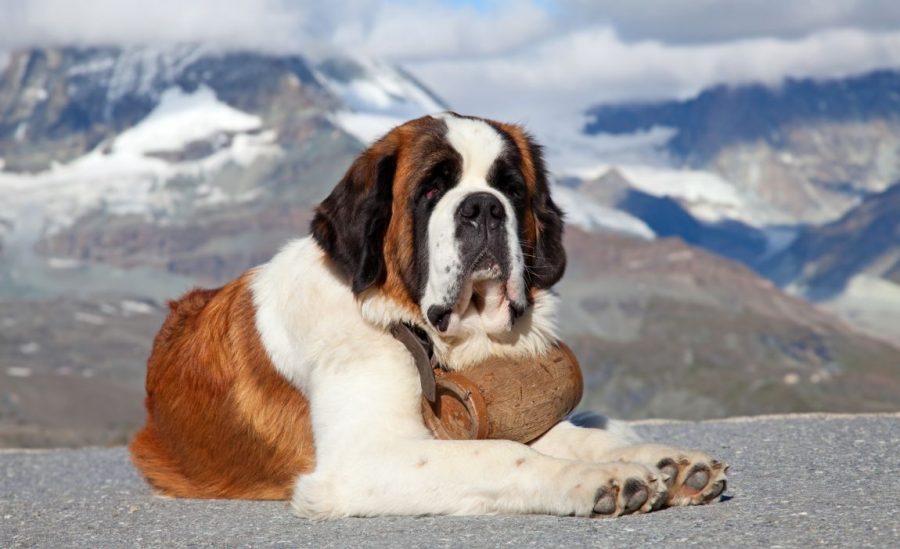


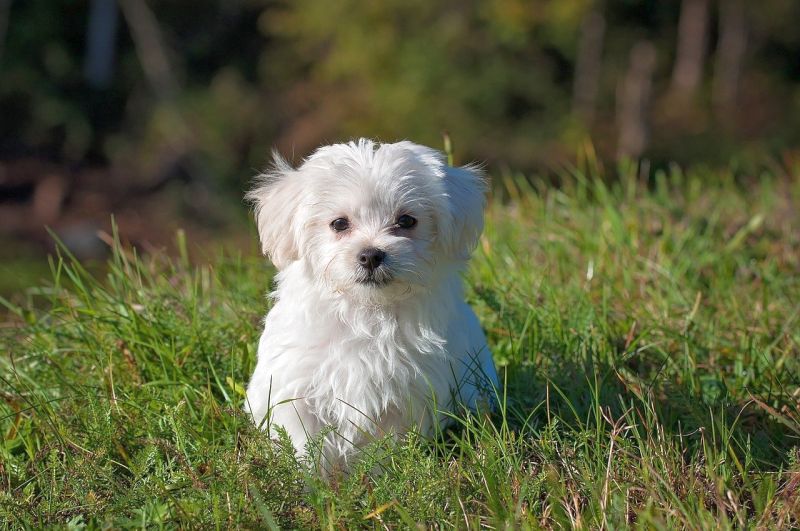
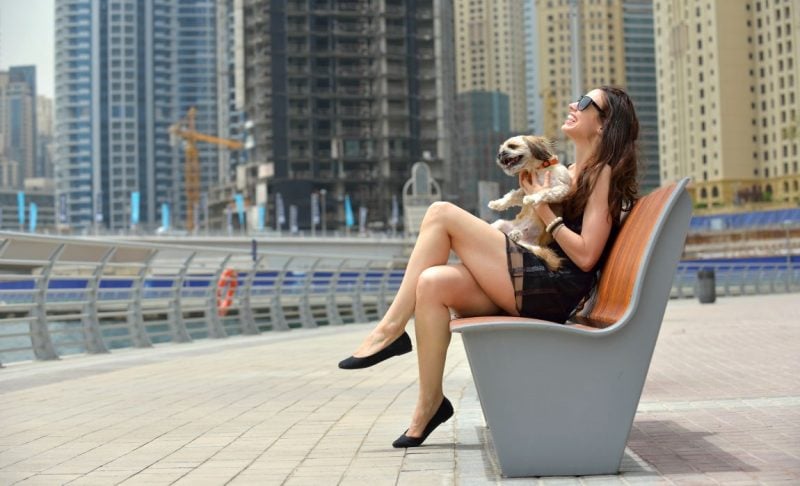
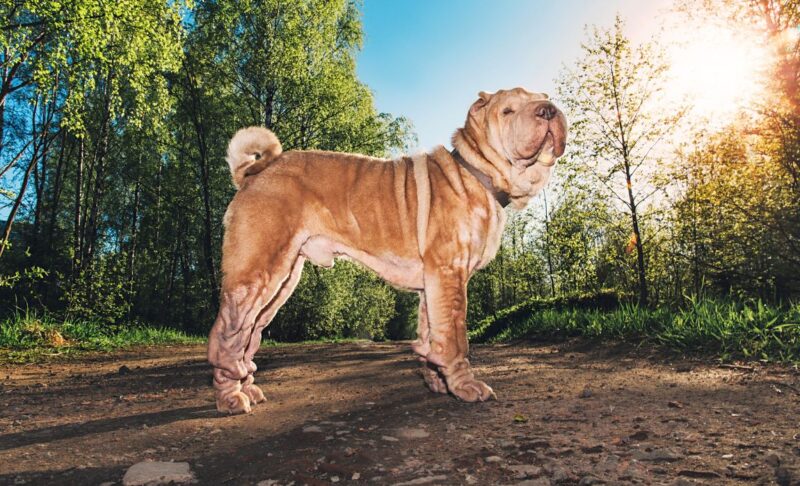
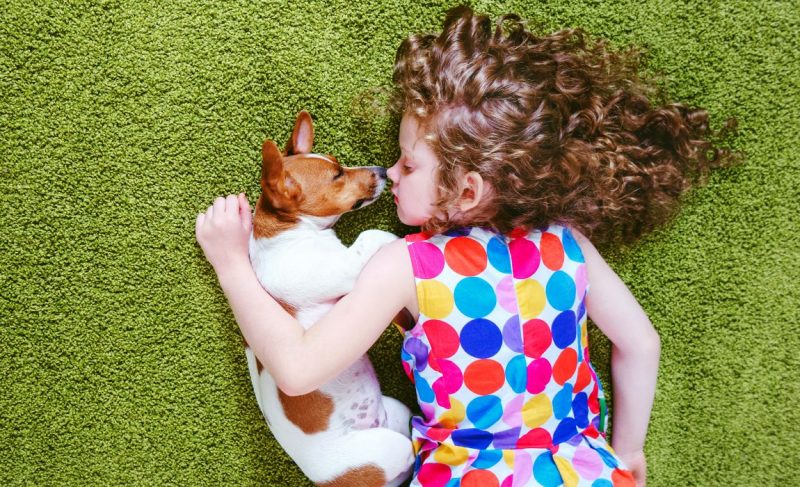
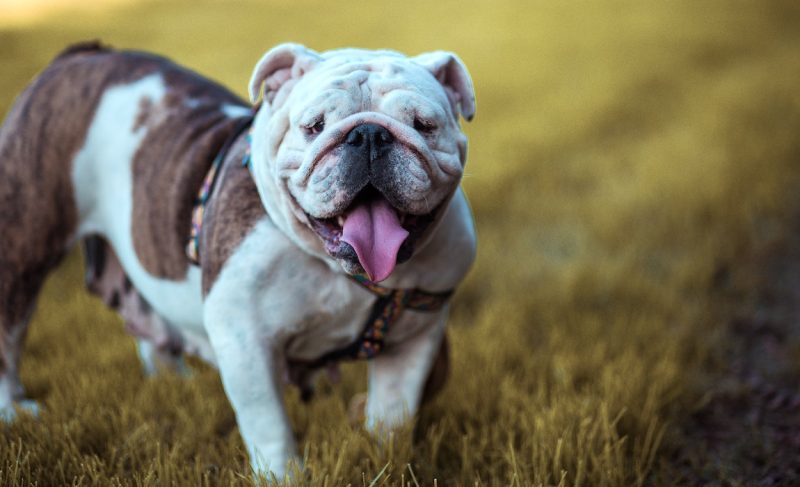
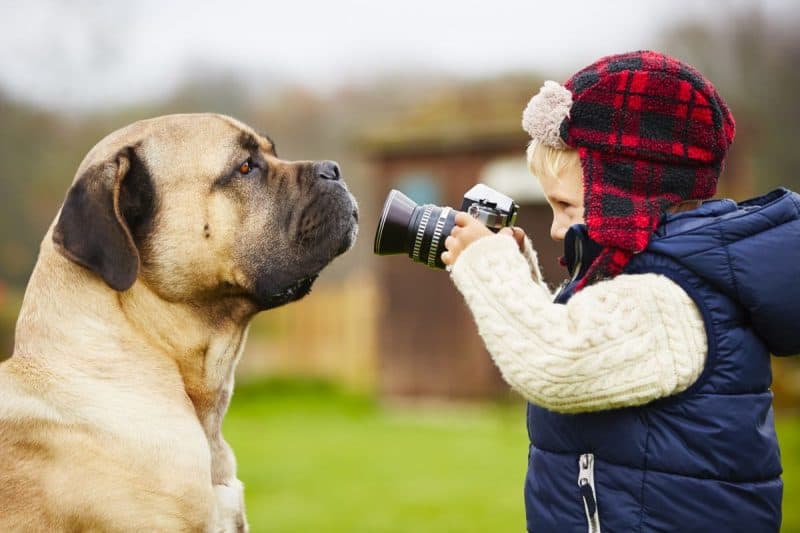
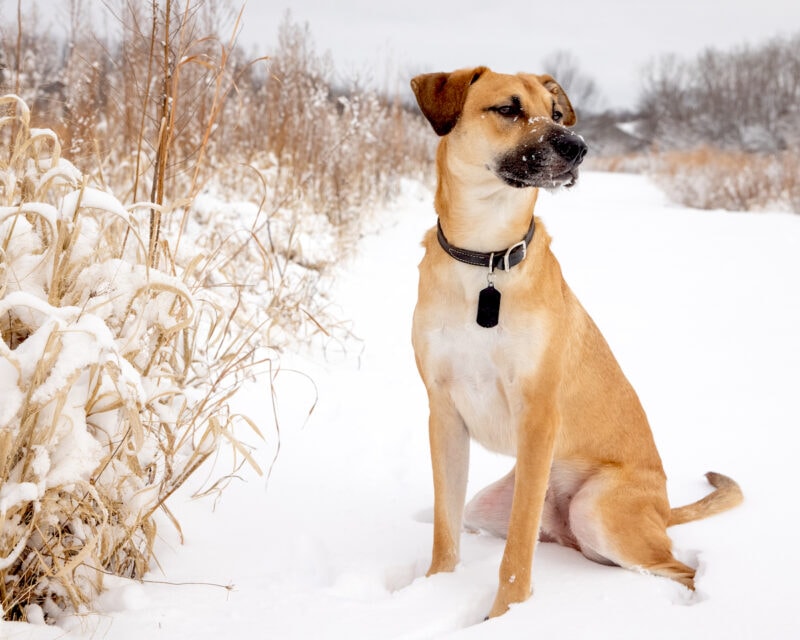

Leave a Comment